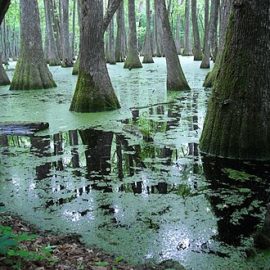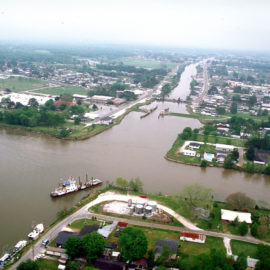
The Corps has another 3 years to study the best way to control the flooding in St Tammany.
The Corps of Engineers has been granted an extra 16 months to fine-tune a three-year study that initially concluded it would cost $4 billion to address chronic flooding across St. Tammany Parish. The St. Tammany Parish Feasibility Study, started in January 2020, will also use an additional $1.77 million to further analyze the design of a levee system, particularly along Military Road and Big Branch Wildlife Refuge, the Corps said. The agency had requested Congressional approval for more time and funding in March of this year. A draft report, released in June 2021, recommended approximately 14 miles of levees and two miles of floodwall in Slidell, clearing Bayou Patassat, channel improvements in Mile Branch, and elevations and floodproofing for about 8,500 structures in the parish. The cost was steep: The floodproofing the study outlined would have cost an estimated $4 billion.
nola.com
Push back came as many of the housing developments were outside the levee system proposed.
After its release, the plan faced pushback as groups questioned its effectiveness. For instance, public comments submitted to the Corps by members of the Military Road Alliance, a group of 14 homeowner associations representing eastern St. Tammany Parish, and the St. Tammany Parish Levee Board noted thousands of homes fall outside of the proposed levee alignments. Communities of concern included Eden Isles, parts of Slidell and nearly 3,000 homes in Magnolia Forest, Quail Ridge, Turtle Creek and Cross Gates, according to the groups. “The Corps study did not address many of the areas we’d like to see protected from storm surge. I am thrilled we’ve been given this opportunity to work together with the Corps and enhance our flood protections,” said Suzanne Krieger, who chairs the St. Tammany Levee, Drainage, and Conservation District, created in 2014.
This is one of the many studies done in the southern part of the state on flood protection as they see what New Orleans has and say “why not me”?
The St. Tammany Parish feasibility study coincides with several other studies throughout the state aimed at mitigating flood risks and it isn’t the first to require additional federal resources.The construction of a dam along the Amite River in East Baton Rouge generated concerns that people south of the dam would be left vulnerable to flood damage. The Corps requested an additional 28 months and $1.9 million in funding to complete the study. The St. Tammany Levee, Drainage, and Conservation District will meet at 6 p.m. Wednesday (June 15) and provide updates for the study’s timeline.
We hear of this one as they are close but with the increase in the ferocity of the hurricanes it is a valid question – why are they not protected.



